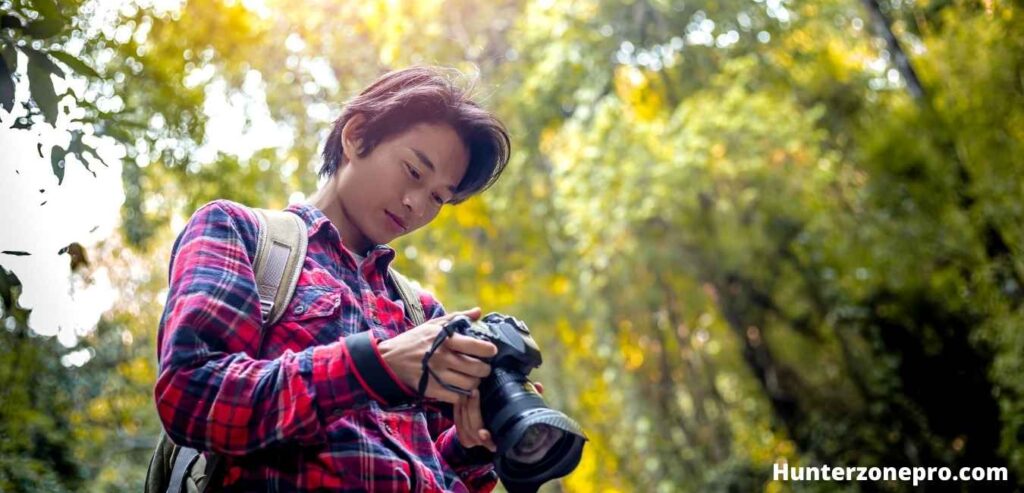Last Updated on October 11, 2021 by Robinellis

How Does Hunting Camera Work? Well, hunting cameras use passive infrared (PIR) sensors to detect the difference in heat between the ambient air and the warm-blooded animal. So when the PIR sensor has a trigger, the camera takes a photo and sends it to a cloud server.
Summary of hunting camera
To understand the question of how does hunting cameras work then you need to consider technological advancement in the hunting arena.
Similarly, hunting cameras have recently become an important part of outdoor leisure technology. They cover multiple uses, from hunting to theft detection. But what’s truly amazing is the variety of options available on the market. So whatever the purpose, some cameras can do a good job of it.
Distinguishing factors of hunting camera
The hunting camera has some great features that make it different from the others. These factors not only provide product diversity but also help provide customer selection criteria.
You can tell the difference between the many types of hunting cameras, but these are the basic features of most cameras.
Many hunting cameras have a motion detection feature that activates the lens iris. A detection area is set for each unit and this function is usually ready for use after entry.
Image resolution and sharpness are also common concerns. Like other cameras, tracking cameras need to take high-quality photos. Therefore, sharpness and the number of pixels are also influencing factors. Finally, the skill and speed of the focusing lens are just as important.
Digital Functionality of hunting camera
The functionality of a digital tracking camera is the same as that of most digital cameras. They are independent units with night functions, power supply, and data storage. When an animal or person enters the detection area of the camera, a rest frame records.
The parameters of the detection zone are typically a determination by the manufacturer. However, the positioning of the device often offers a surprising range.
Some units even offer video options for those who need them. Data recovery depends on the physical download of the image. Many also have nighttime capabilities based on infrared, LED, or traditional flash.
Cellular Capabilities
These units are capable of capturing digital images. However, they do not store the data on the drive itself. After taking a photo, the camera sends the image to the user’s mobile phone. Using the Internet and wireless signals, the device can perform instant image searches. The device itself requires a SIM card, just like a smartphone. This means that it requires a data packet for its use. Also, you need to get a good signal at the location of the unit.
Strobe Lights
The target for monitoring is usually hidden. This is the ideal choice behind the flash. A small flash fires when the detection zone activates. The speed of the flash allows the user to keep the images. If the device is for theft detection, the flash works as a warning to potential intruders. However, this notice may interfere with a hunting purpose.
Wireless activation
One of the most suitable devices for theft detection is a wireless activation location camera. After the image is taken, it is sent over the wireless network. The device can connect to any network or receiving device. However, you must especially link them so that you can send and receive them. Signal availability and strength factors affect the use of this unit. Moreover, in a desert climate, there is usually a compromise in the signal.
Infrared
Many tracking cameras typically work in dark places. In this case, the user can use the infrared function. The sensors on these devices activate when help is necessary. After taking a photo, it radiates infrared rays to provide light for exposure. Unlike traditional white flashes, infrared rays can be kept secret. Depending on the particular unit, the infrared can be red or white. This difference does not usually affect image quality. However, these images color with light shades of green, red, or white.
What is a good hunting camera?
Three main factors determine whether a hunting camera works well.
- Shooting speed
- Size of the detection area
- Recovery rate
Conclusion
Hope you have a better understanding of how location cameras work. This helps determine the appropriate surveillance location to record more photos with fewer blank frames.
It is worth noting that as the tracking camera ages, the PIR sensor becomes more “noise” and less accurate in detecting the “moving heat” of the recorded image.
Similarly, cheap tracking cameras have low-quality PIR sensors and tend to wear out faster, which should be taken into consideration when buying a tracking camera.
The best way to learn how to does a hunting camera work? Is to spend time testing out all the features and different settings. The knowledge gained from this experience is invaluable for years of wildlife exploration.
